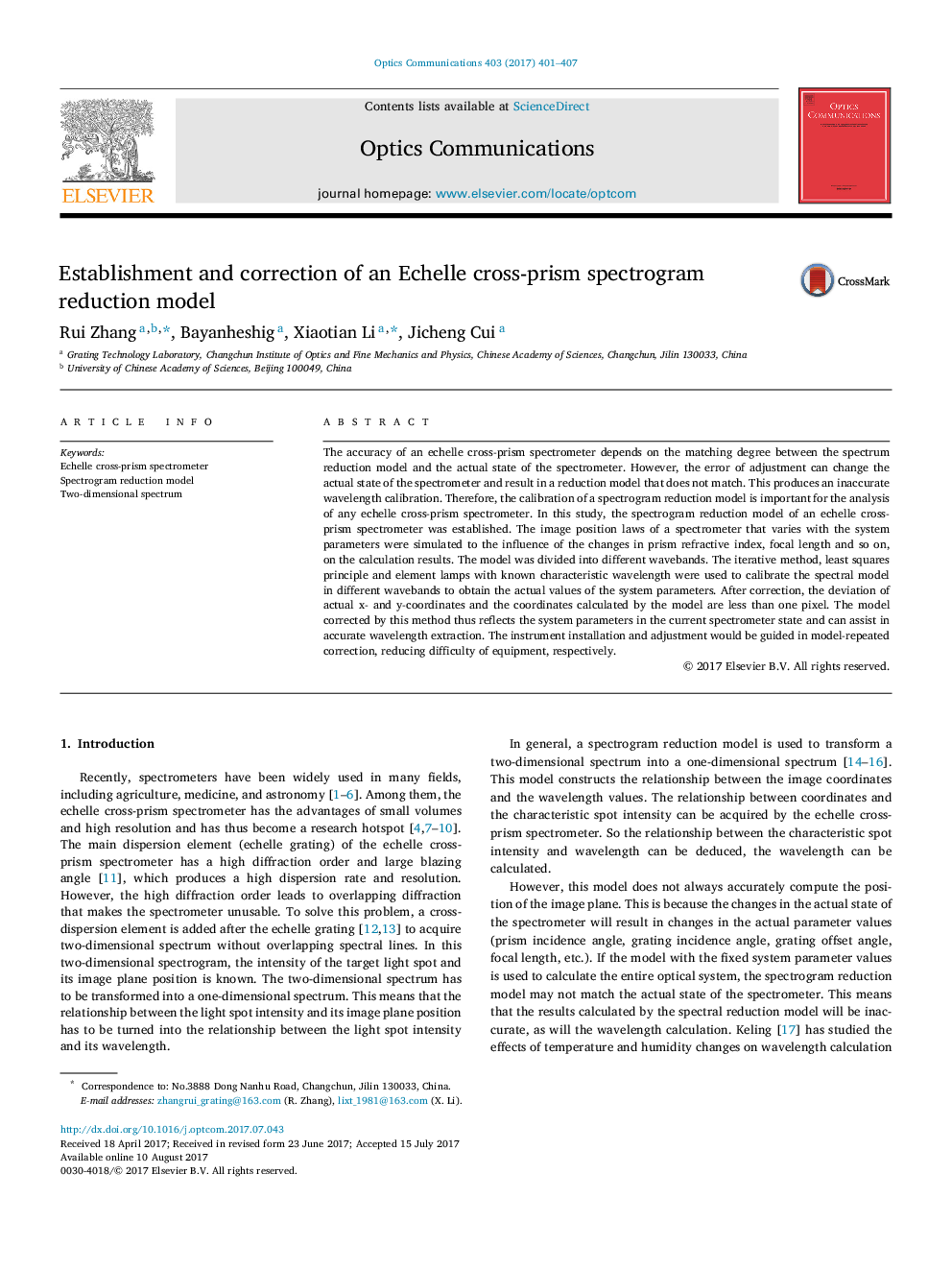| Article ID | Journal | Published Year | Pages | File Type |
|---|---|---|---|---|
| 5449236 | Optics Communications | 2017 | 7 Pages |
Abstract
The accuracy of an echelle cross-prism spectrometer depends on the matching degree between the spectrum reduction model and the actual state of the spectrometer. However, the error of adjustment can change the actual state of the spectrometer and result in a reduction model that does not match. This produces an inaccurate wavelength calibration. Therefore, the calibration of a spectrogram reduction model is important for the analysis of any echelle cross-prism spectrometer. In this study, the spectrogram reduction model of an echelle cross-prism spectrometer was established. The image position laws of a spectrometer that varies with the system parameters were simulated to the influence of the changes in prism refractive index, focal length and so on, on the calculation results. The model was divided into different wavebands. The iterative method, least squares principle and element lamps with known characteristic wavelength were used to calibrate the spectral model in different wavebands to obtain the actual values of the system parameters. After correction, the deviation of actual x- and y-coordinates and the coordinates calculated by the model are less than one pixel. The model corrected by this method thus reflects the system parameters in the current spectrometer state and can assist in accurate wavelength extraction. The instrument installation and adjustment would be guided in model-repeated correction, reducing difficulty of equipment, respectively.
Related Topics
Physical Sciences and Engineering
Materials Science
Electronic, Optical and Magnetic Materials
Authors
Rui Zhang, Bayanheshig Bayanheshig, Xiaotian Li, Jicheng Cui,
